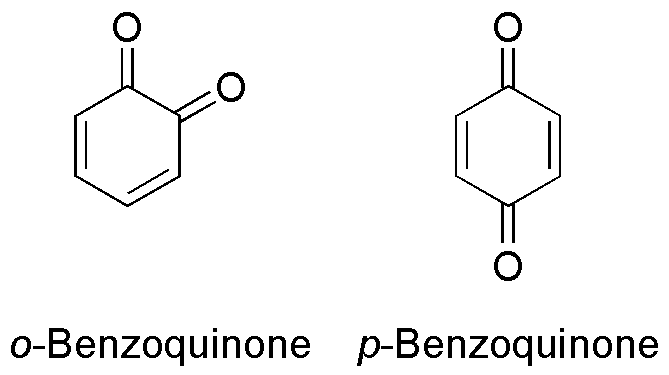|
Herbimycin
Herbimycin is a benzoquinone ansamycin antibiotic that binds to Hsp90 (Heat Shock Protein 90) and alters its function. Hsp90 client proteins play important roles in the regulation of the cell cycle, cell growth, cell survival, apoptosis, angiogenesis and oncogenesis. It was originally found by its herbicidal activity, and thus named. The most recent herbimycins to be discovered, herbimycins D-F, were isolated from a ''Streptomyces'' isolated from thermal vents associated with the Ruth Mullins coal fire in Appalachian Kentucky. Synonyms * Antibiotic Tan 420F * Herbimycin A Biological activity Herbimycin induces the degradation of proteins that are need to be mutated in tumor cells such as v-Src, Bcr-Abl and p53 preferentially over their normal cellular counterparts. This effect is mediated via Hsp90. See also * Geldanamycin * Satoshi Ōmura is a Japanese biochemist. He is known for the discovery and development of hundreds of pharmaceuticals originally occurring in microor ... [...More Info...] [...Related Items...] OR: [Wikipedia] [Google] [Baidu] |
Center For Pharmaceutical Research And Innovation
The Center for Pharmaceutical Research and Innovation (CPRI) is a University of Kentucky-based research center established by the University of Kentucky College of Pharmacy in 2012 to facilitate academic translational research and drug discovery/drug development. The UK CPRI specializes in natural product-based drug discovery from microbes found within unique environments including underground and surface coal mines, acid mine drainage and mine reclamation sites, thermal vents associated with underground coal mine fires (see coal seam fire) and deep-well drilling for carbon sequestration. CPRI also provides core support for medicinal chemistry, assay development and screening, rational drug design, computational chemistry, and ADMET. The Center collaborates with investigators focused on drug discovery or development research in the areas of cancer, drug and alcohol addiction, cardiovascular disease, infectious disease, regenerative medicine and neurodegenerative disease A neurodeg ... [...More Info...] [...Related Items...] OR: [Wikipedia] [Google] [Baidu] |
Satoshi Ōmura
is a Japanese biochemist. He is known for the discovery and development of hundreds of pharmaceuticals originally occurring in microorganisms. In 2015, he was awarded the Nobel Prize in Physiology or Medicine jointly with William C. Campbell for their role in the discovery of avermectins and ivermectin, the world's first endectocide and a safe and highly effective microfilaricide. It is believed that the large molecular size of ivermectin prevents it from crossing the blood/aqueous humour barrier, and renders the drug an important treatment of helminthically-derived blindness. Early life and education Satoshi Ōmura was born in Nirasaki, Yamanashi Japan in 1935, the second son of Ōmura family. After graduating from the University of Yamanashi in 1958, he was appointed to science teacher at Tokyo Metropolitan Sumida Tech High School. In 1960, he became an auditor of Koji Nakanishi’s course at Tokyo University of Education, one year later, he enrolled in the Tokyo ... [...More Info...] [...Related Items...] OR: [Wikipedia] [Google] [Baidu] |
Hygroscopic
Hygroscopy is the phenomenon of attracting and holding water molecules via either absorption (chemistry), absorption or adsorption from the surrounding Natural environment, environment, which is usually at normal or room temperature. If water molecules become suspended among the substance's molecules, adsorbing substances can become physically changed, e.g. changing in volume, boiling point, viscosity or some other physical characteristic or property of the substance. For example, a finely dispersed hygroscopic powder, such as a salt, may become clumpy over time due to collection of moisture from the surrounding environment. ''Deliquescent'' materials are sufficiently hygroscopic that they dissolve in the water they absorb, forming an aqueous solution. Hygroscopy is essential for many plant and animal species' attainment of hydration, nutrition, reproduction and/or seed dispersal. Biological evolution created hygroscopic solutions for water harvesting, filament tensile strength, ... [...More Info...] [...Related Items...] OR: [Wikipedia] [Google] [Baidu] |
Bcr-Abl
The Philadelphia chromosome or Philadelphia translocation (Ph) is an abnormal version of chromosome 22 where a part of the '' Abelson murine leukemia'' 1 (''ABL1'') gene on chromosome 9 breaks off and attaches to the '' breakpoint cluster region'' (''BCR'') gene in chromosome 22. The balanced reciprocal translocation between the long arms of 9 and 22 chromosomes (9; 22) (q34; q11)results in the fusion gene ''BCR::ABL1''. The oncogenic protein with persistently enhanced tyrosine kinase (TK) activity transcribed by the ''BCR''::''ABL1'' fusion gene can lead to rapid, uncontrolled growth of immature white blood cells that accumulates in the blood and bone marrow. The Philadelphia chromosome is present in the bone marrow cells of a vast majority ''chronic myelogenous leukemia'' (CML) patients. The expression patterns off different BCR-ABL1 transcripts vary during the progression of CML. Each variant is present in a distinct leukemia phenotype and can be used to predict response to t ... [...More Info...] [...Related Items...] OR: [Wikipedia] [Google] [Baidu] |
Lactams
A lactam is a cyclic amide, formally derived from an amino alkanoic acid through cyclization reactions. The term is a portmanteau of the words '' lactone'' + ''amide''. Nomenclature Greek prefixes in alphabetical order indicate ring size. This ring-size nomenclature stems from the fact that hydrolysis of an α-lactam gives an α-amino acid and that of a β-Lactam gives a β-amino acid, and so on. Synthesis General synthetic methods are used for the organic synthesis of lactams. Beckmann rearrangement Lactams form by the acid-catalyzed rearrangement of oximes in the Beckmann rearrangement. Schmidt reaction Lactams form from cyclic ketones and hydrazoic acid in the Schmidt reaction. Cyclohexanone with hydrazoic acid, forms ε - Caprolactum, which upon treatment with excess acid forms Cardiazole, a heart stimulant. Cyclization of amino acids Lactams can be formed from cyclisation of amino acids via the coupling between an amine and a carboxylic acid within the s ... [...More Info...] [...Related Items...] OR: [Wikipedia] [Google] [Baidu] |
Carbamates
In organic chemistry, a carbamate is a category of organic compounds with the general formula and structure , which are formally derived from carbamic acid (). The term includes organic compounds (e.g., the ester ethyl carbamate), formally obtained by replacing one or more of the hydrogen atoms by other organic functional groups; as well as salts with the carbamate anion (e.g. ammonium carbamate). Polymers whose repeat units are joined by carbamate like groups are an important family of plastics, the polyurethanes. See for clarification. Properties While carbamic acids are unstable, many carbamate esters and salts are stable and well known. Equilibrium with carbonate and bicarbonate In water solutions, the carbamate anion slowly equilibrates with the ammonium cation and the carbonate or bicarbonate anions: : : Calcium carbamate is soluble in water, whereas calcium carbonate is not. Adding a calcium salt to an ammonium carbamate/carbonate solution will precipitate ... [...More Info...] [...Related Items...] OR: [Wikipedia] [Google] [Baidu] |
Antibiotics
An antibiotic is a type of antimicrobial substance active against bacteria. It is the most important type of antibacterial agent for fighting pathogenic bacteria, bacterial infections, and antibiotic medications are widely used in the therapy, treatment and antibiotic prophylaxis, prevention of such infections. They may either bactericide, kill or bacteriostatic agent, inhibit the growth of bacteria. A limited number of antibiotics also possess antiprotozoal activity. Antibiotics are not effective against viruses such as the ones which cause the common cold or influenza. Drugs which inhibit growth of viruses are termed antiviral drugs or antivirals. Antibiotics are also not effective against fungi. Drugs which inhibit growth of fungi are called antifungal drugs. Sometimes, the term ''antibiotic''—literally "opposing life", from the Greek language, Greek roots ἀντι ''anti'', "against" and βίος ''bios'', "life"—is broadly used to refer to any substance used against ... [...More Info...] [...Related Items...] OR: [Wikipedia] [Google] [Baidu] |
Geldanamycin
Geldanamycin is a 1,4-benzoquinone ansamycin Antitumor agent, antitumor antibiotic that inhibits the function of Hsp90 (Heat Shock Protein 90) by binding to the unusual ADP/ATP-binding pocket of the protein. HSP90 client proteins play important roles in the regulation of the cell cycle, cell growth, cell survival, apoptosis, angiogenesis and oncogenesis. Geldanamycin induces the degradation of proteins that are mutated or overexpressed in tumor cells such as v-Src, Bcr-Abl, p53, and ERBB2. This effect is mediated via HSP90. Despite its potent antitumor potential, geldanamycin presents several major drawbacks as a drug candidate such as hepatotoxicity, further, Jilani ''et al.''. reported that geldanamycin induces the apoptosis of erythrocytes under physiological concentrations. These side effects have led to the development of geldanamycin analogues, in particular analogues containing a derivatisation at the 17 position: * 17-AAG * 17-DMAG Biosynthesis Geldanamycin was original ... [...More Info...] [...Related Items...] OR: [Wikipedia] [Google] [Baidu] |
V-Src
v-Src is a gene found in Rous sarcoma virus (RSV) that encodes a tyrosine kinase that causes a type of cancer in chickens. The src gene is oncogenic as it triggers uncontrolled growth in abnormal host cells. It was the first retroviral oncogene to be discovered. The src gene was taken up by RSV and incorporated into its genome conferring it with the advantage of being able to stimulate uncontrolled mitosis of host cells, providing abundant cells for fresh infection. The src gene is not essential for RSV proliferation but it greatly increases virulence when present. Discovery Francis Peyton Rous first proposed that viruses can cause cancer. He proved it in 1911 and was later awarded the Nobel prize in 1966. Chickens grow a tumor called a fibrosarcoma. Rous collected and ground up these sarcomas, and then centrifuged them to remove the solid material. Next, the remaining liquid mixture was injected into chicks. The chicks developed sarcomas. The causative agent in the liqui ... [...More Info...] [...Related Items...] OR: [Wikipedia] [Google] [Baidu] |
Benzoquinone
Benzoquinone (C6H4O2) is a quinone with a single benzene ring. There are 2 (out of 3 hypothetical) benzoquinones: * 1,4-Benzoquinone, most commonly, right image (also ''para''-benzoquinone, ''p''-benzoquinone, ''para''-quinone, or just quinone) * 1,2-Benzoquinone, less commonly, left image (also ''ortho''-benzoquinone, ''o''-benzoquinone, ''ortho''-quinone) *1,3-benzoquinone "does not exist, because its structure would be nonplanar and highly strained", though derivatives are known. An alkylated ''p''-benzoquinone has been found in the rhizomes of '' Iris kemaonensis''. See also * Arene substitution pattern Arene substitution patterns are part of organic chemistry IUPAC nomenclature and pinpoint the position of substituents other than hydrogen in relation to each other on an aromatic hydrocarbon. ''Ortho'', ''meta'', and ''para'' substitution * ... References {{Chemistry index ... [...More Info...] [...Related Items...] OR: [Wikipedia] [Google] [Baidu] |
Tumor
A neoplasm () is a type of abnormal and excessive growth of tissue. The process that occurs to form or produce a neoplasm is called neoplasia. The growth of a neoplasm is uncoordinated with that of the normal surrounding tissue, and persists in growing abnormally, even if the original trigger is removed. This abnormal growth usually forms a mass, which may be called a tumour or tumor.'' ICD-10 classifies neoplasms into four main groups: benign neoplasms, in situ neoplasms, malignant neoplasms, and neoplasms of uncertain or unknown behavior. Malignant neoplasms are also simply known as cancers and are the focus of oncology. Prior to the abnormal growth of tissue, such as neoplasia, cells often undergo an abnormal pattern of growth, such as metaplasia or dysplasia. However, metaplasia or dysplasia does not always progress to neoplasia and can occur in other conditions as well. The word neoplasm is from Ancient Greek 'new' and 'formation, creation'. Types A neopla ... [...More Info...] [...Related Items...] OR: [Wikipedia] [Google] [Baidu] |




